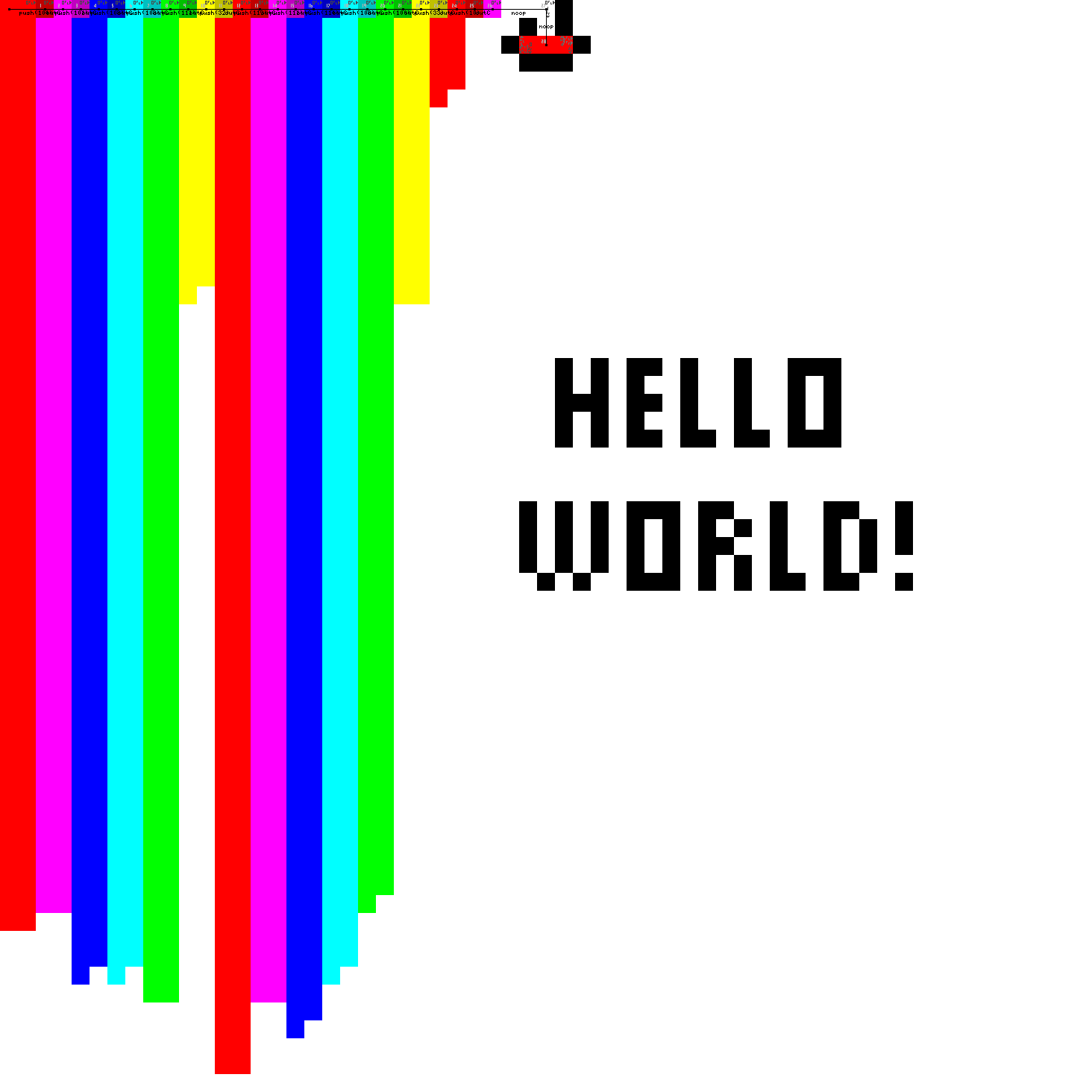
 big
bigger
big
bigger


(36 trace steps)
Note: this is an updated example to v1.2 with proper white codel crossing.


The trace output shows the straight way with the black line from the upper-left codel to the right.
Not genious, but an easy way to output strings in piet.
(This one is really a smile worth ;-)

The program really spents some of its time preparing and doing rolls of the stack, but thats the way if you can access only the top of the stack.
The big red color block represents the N result char and is the exit if the number is not prime. The block is traversed within the test loop too, but without a command to be executed.
The Y case is evaluated running into the green and dark-red color blocks at the right border (the Y is calculated there).
The white blocks traved through are used to seperate some of the evaluation steps and make it easier to code - i mean: easier to read.
Note: updated to be fine with v1.2 white codel crossing.